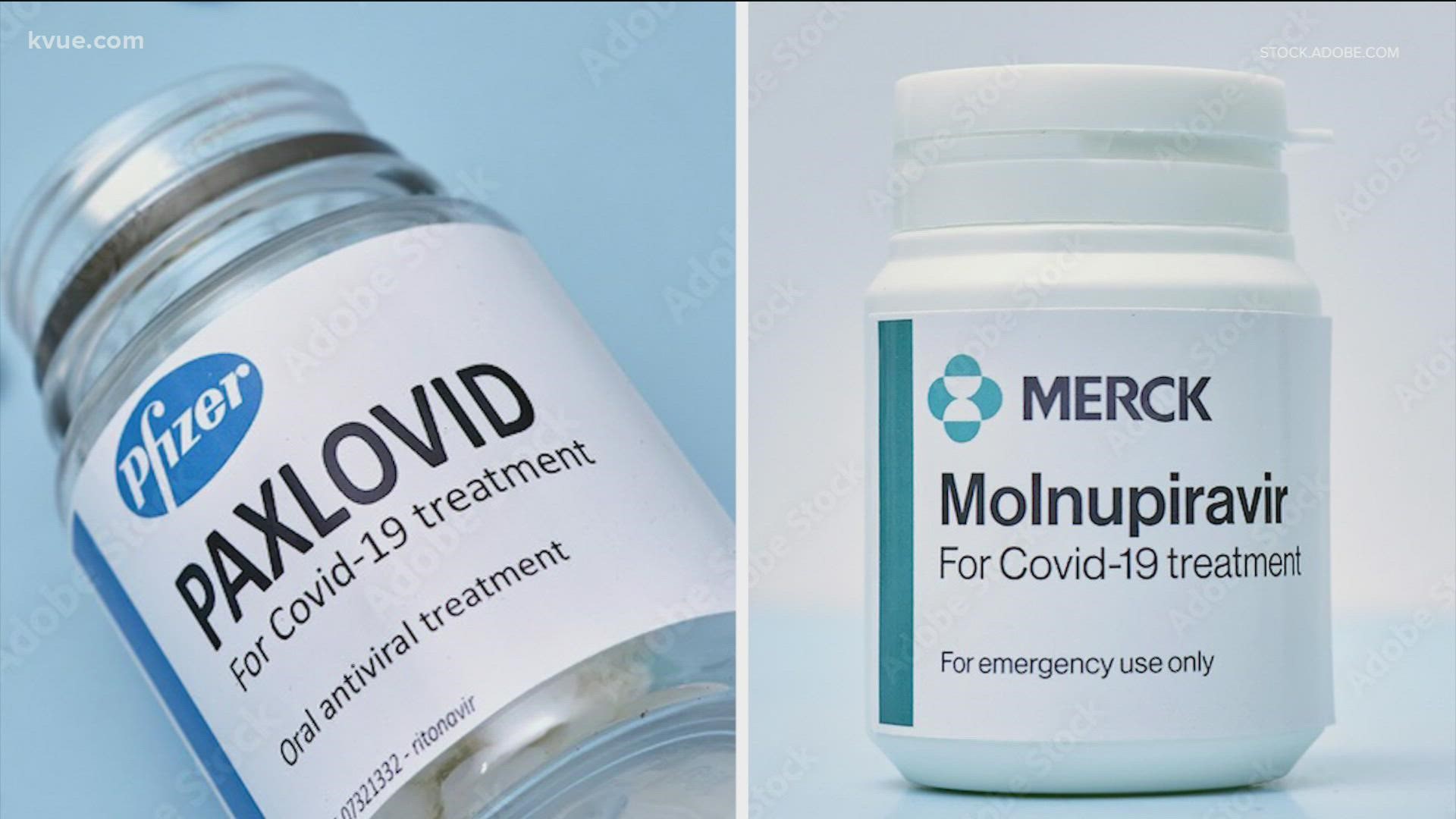Two years into the COVID pandemic, we are still fighting the virus globally. Although cases involving the omicron variant are as rampant as ever, there is news that two new antiviral medications are now available, giving yet another mode of therapy and advancement in the science world.
Pharmaceutical giants Pfizer and Merck received FDA approval for two drugs in late December 2021. Pfizer’s Paxlovid and Merck’s Molnupiravir are life-saving medications that work differently than other treatments, like monoclonal antibodies. Both oral medications work to kill the virus, and patients can choose one of these two options within five days of the onset of symptoms.
It’s important to understand how each medication works and their similarities and differences, too.
- Pfizer’s Paxlovid is actually two antiviral pills—nirmatrelvir, which prevents the virus from copying itself, and ritonavir, which works to slow down the rate at which nirmatrelvir breaks down, so together, the combination is more effective than each on its own.
- Merck’s Molnupiravir works differently from Paxlovid. Instead of stopping the virus from replicating, it uses a ‘fake’ genetic piece of material that insert into the normal genome of the virus, thus introducing errors that render the virus unable to duplicate itself.
HOW TO USE EACH ONE
For both Paxlovid and Molnupiravir to be effective, patients must take the drugs while the virus is still in the reproductive stage, which occurs during the first five days of the onset of symptoms, regardless of the strain or variant. The sooner a patient receives treatment, the better. Taking either medication after the initial symptoms set in and any longer than the first five days may have lower effectiveness in treating the virus. Testing is also essential to ensure that COVID-positive patients receive the proper course of treatment. Paxlovid consists of three morning and night tablets, and Molnupiravir requires taking four pills twice daily.
Unlike monoclonal antibodies, which require an IV infusion, patients take these antiviral medications orally. Whereas vaccines and even monoclonals create antibodies, these new antivirals strike at the virus itself without making antibodies. Each function somewhat differently, too: Pfizer’s Paxlovid obstructs an enzyme that the virus needs to reproduce and survive, whereas Molnupiravir tricks the virus with fake genetic material to stop replication.
Like most medications and antiviral drugs, there are some side effects with Paxlovid and Molnupiravir, although they are relatively mild. In clinical trials, the most commonly reported side effects include:
- Muscle aches
- Diarrhea
- High blood pressure
- Changes in taste
- Dizziness
- Nausea
It’s also essential to know that there are contraindications and suggested use for both antivirals. For example, Paxlovid is not recommended for anyone with kidney and/or liver problems since the medication can potentially cause damage to these organs. In addition, since Paxlovid is a protease inhibitor, doctors do not recommend that HIV-positive patients take the medicine as it can cause other HIV medications to be less effective. As far as Molnupiravir goes, it is not recommended for children under the age of 18 due to cartilage and bone development issues. It’s also not recommended in pregnancy women due to a risk of miscarriages and potential congenital disabilities and harm to unborn babies.
WHAT THE DATA SAYS
The results garnered during the FDA trials are pretty outstanding, too. According to press releases issued by each company respectively, Paxlovid reduces the chance of hospitalization and death in those considered high-risk by 89 percent. In contrast, Molnupiravir can reduce hospitalizations and deaths by 30 percent. If the more potent medication, Paxlovid, is unavailable, the FDA recommends using Molnupiravir since it does show some effectiveness.
IN HIGH DEMAND
For as much good as both Paxlovid and Molnupiravir can do, there is a current shortage (due to supply chain issues) of the drugs in the United States. For that reason, vaccination is still critical, especially since it helps lower the risk of infection and the degree and longevity of the virus, should it be contracted.
Until more medication is widely available, patient selection comes down to the prescribing doctors, most of whom score patients on risk. So doctors are prescribing the antivirals to the unvaccinated and high-risk patients first but also trying to distribute enough of the drugs out to those who are either partially vaccinated or immunocompromised and vaccinated. Disease cases, cancer, and obesity patients are given precedence. There’s now a glimmer of hope that more science-based treatment options are becoming available to hopefully put an end to this pandemic once and for all.
Map and listing of medication availability near you
Click the buttons below to toggle between each treatment’s availability. If the current availability is “0,” the pharmacy has likely dispensed their current order, but more may be on the way.
COVID-19 Antiviral Pill Locator (Paxlovid)
Click the buttons below to toggle between each treatment's availability. If the current availability is "0," the pharmacy has likely dispensed their current order, but more may be on the way.
Enter your city below
Written by Elise Minton Tabin




